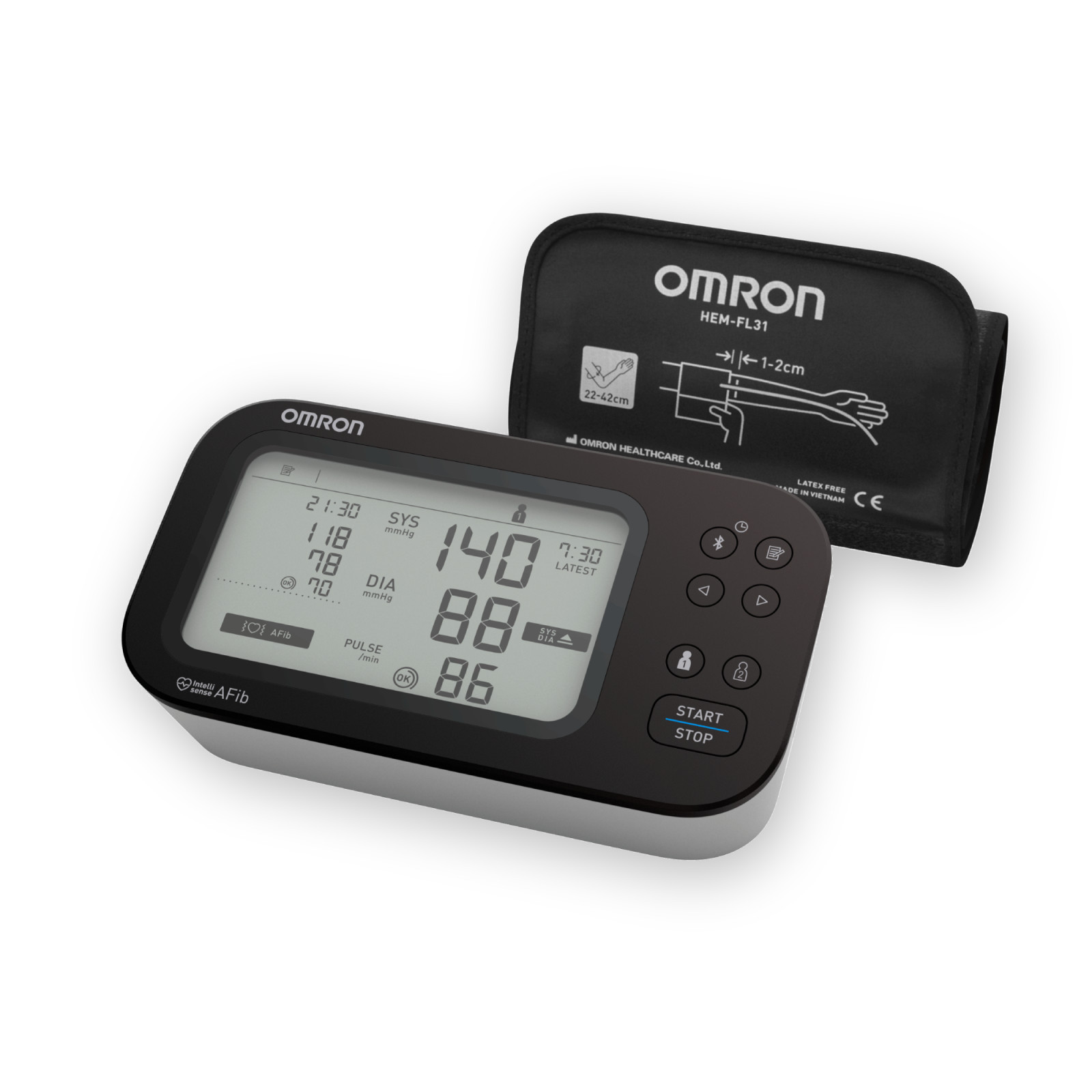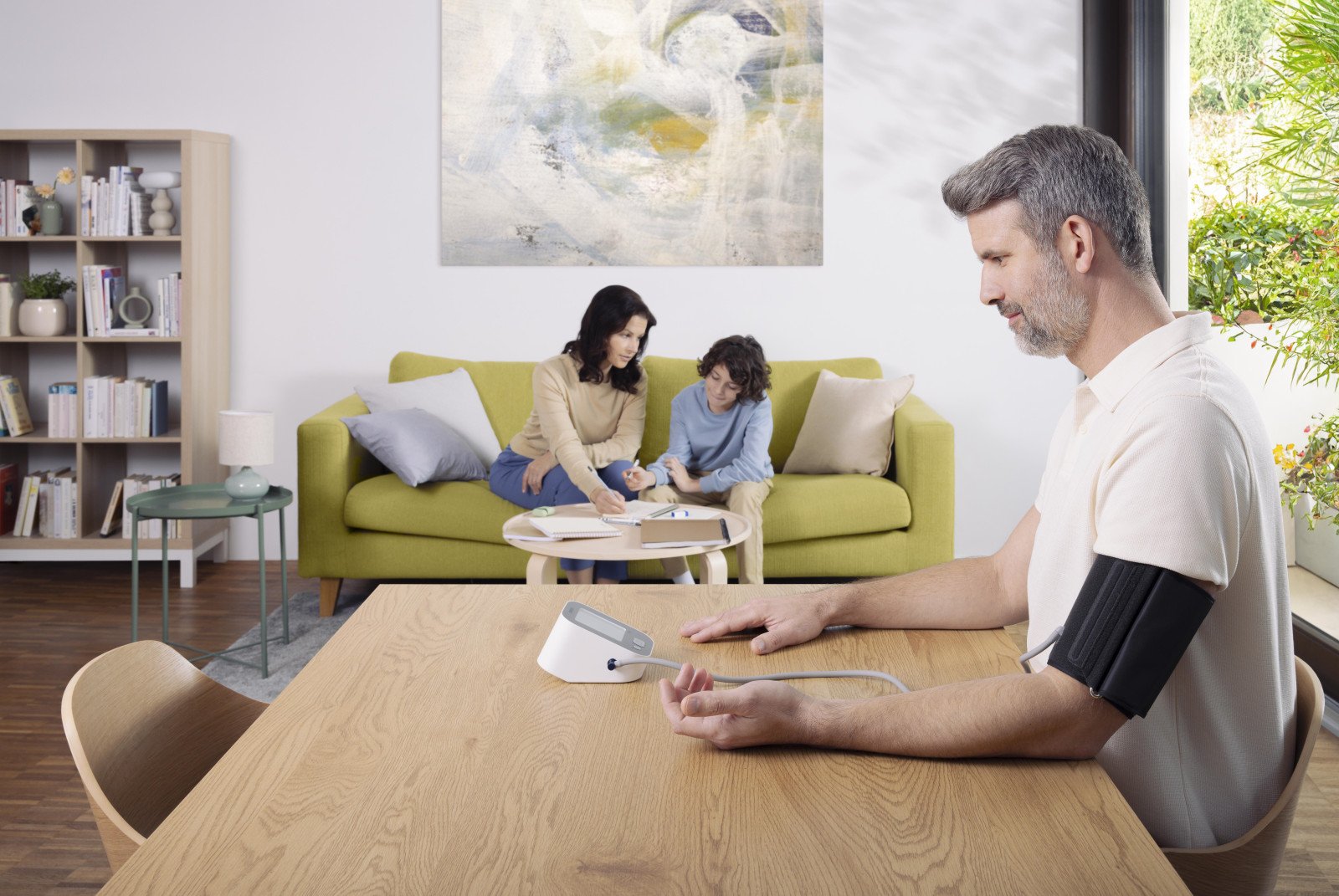
Cardiovascular Topics
Tackling health challenges from home
There is a drive in the NHS to help patients monitor hypertension and cardiovascular events from the comfort of home.

There is a drive in the NHS to help patients monitor hypertension and cardiovascular events from the comfort of home.
In the UK alone, cardiovascular disease affects around 7 million people. Understandably, this makes preventing cardiovascular disease (CVD) a priority for the NHS. In fact, not only is it a clinical priority but the NHS recognises CVD as the single biggest condition in the UK where lives can be saved over the next 10 years.1
The plan is to help prevent over 150,000 heart attacks, strokes and dementia cases over the next 10 years. By treating and managing all CVD conditions, from angina, atrial fibrillation, heart attack, congestive heart disease, stroke and vascular dementia to hypertension.1
CVD in the UK1
CVD accounts for 1 in 4 premature deaths in the UK, with the largest gap in health life expectancy
People in the most deprived 10% of the population are almost twice as likely to die from CVD, than people in the least deprived 10%
Atrial fibrillation (AF), high cholesterol, or high blood pressure are all ‘high risk conditions’ for CVD
Other risk factors for CVD include, diabetes, family history of heart disease, smoking, being from a black, Asian, or ethnic minority background
People with severe mental illness have a 53% higher risk of having CVD, with an 85% higher risk of death due to CVD than the general populationThe NHS national CVD Prevention programme is set up to provide targeted interventions. The aim being to increase diagnosis, and minimise risks for individuals and the population as a whole.1
Do your patients know their ‘ABC’ numbers (AF, blood pressure, cholesterol)?
The long-term aim of the CVD Prevention programme is to help patients become familiar with their ABC numbers. So, treatment can be deployed rapidly, should it need to be. In this way we can support doctors, nurses and pharmacists in Primary Care Networks to identify and treat those at risk.1
Home monitoring is key
One way in which care can be supported, and useful data provided is via home monitoring of cardiovascular activity and blood pressure. Staying connected is becoming increasingly important. Using digital apps such as OMRON connect can positively influence the patient-doctor relationship and provide additional touchpoints for checking on the patient's data, leading to better patient outcomes. In a recent randomised controlled trial (RCT) to evaluate the home and online management of blood pressure, 622 people with treated but poorly controlled hypertension (>140/90 mm Hg) from 76 general practices in the UK were studied.2
While the NHS already recognises the multifold benefits of home monitoring, from convenience for patients to valuable data provision. It’s interesting to note the clinical findings of a UK specific RCT:2
After 1 year data was available from 552 participants (88.6%) with imputation for the remaining 70 participants (11.4%)
Mean blood pressure dropped from 151.7/86.4 to 138.4/80.2 mm Hg in the intervention group, and from 151.6/85.3 to 141.8/79.8 mm Hg in the usual care group, giving a mean difference in systolic blood pressure of -3.4 mm Hg and a mean difference in diastolic blood pressure of -0.5 mm Hg
Within trial costs showed an incremental cost effectiveness ratio of £11 per mm Hg reduction
In conclusion, digital intervention at home for blood pressure monitoring and the management of hypertension led to superior control of systolic blood pressure after 1 year than usual care. There were also low incremental costs. While implementation in clinical settings requires integration into healthcare systems, the benefits of measuring blood pressure from patients’ homes are clear.
If you would like to read more about the OMRON range of cardiovascular management and monitoring products, please have a look here.
Related blogs
References
1: NHS England. Our work. Clinical policy. Available at: https://www.england.nhs.uk/ourwork/clinical-policy/. Accessed August 2022.
2: McManus, R.J. et al. (2021). Home and Online Management and Evaluation of Blood Pressure (HOME BP) using a digital intervention in poorly controlled hypertension: randomised controlled trial. BMJ, p.m4858. doi:10.1136/bmj.m4858.
OHEAPP-29









